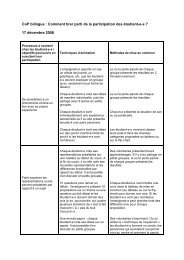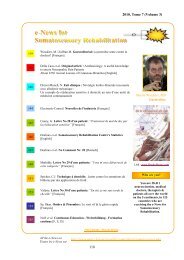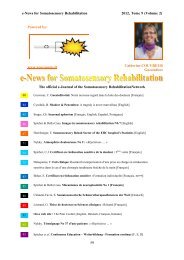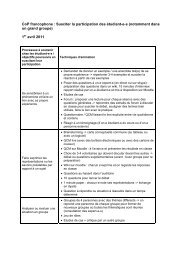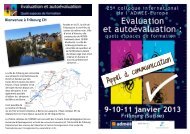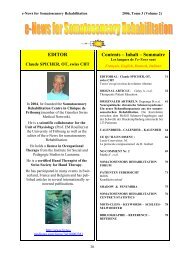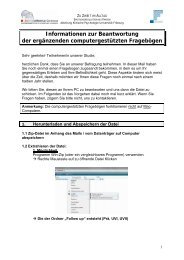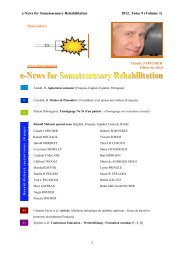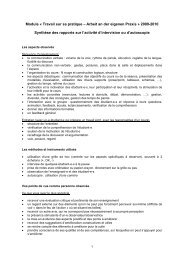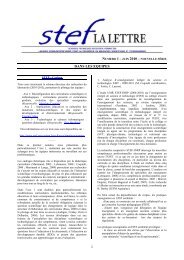e-News 9(3-4) - Blog @unifr - Université de Fribourg
e-News 9(3-4) - Blog @unifr - Université de Fribourg
e-News 9(3-4) - Blog @unifr - Université de Fribourg
You also want an ePaper? Increase the reach of your titles
YUMPU automatically turns print PDFs into web optimized ePapers that Google loves.
e-<strong>News</strong> for Somatosensory Rehabilitation 2012, Tome 9 (Volume 3-4)<br />
Read for you<br />
Handbook for Somatosensory Rehabilitation by Clau<strong>de</strong> J. Spicher<br />
published by Sauramps Medical 2006 ISBN 2-84023-470-x<br />
To MD. To neuroscientist To patient To therapist<br />
P., HIGMAN 7<br />
This book is written by an expert; Clau<strong>de</strong> Spicher has spent over 20 years working with<br />
clients suffering from somatosensory problems as well as researching the topic. In that time<br />
he has observed what is useful and has tried this out so that his experience has enabled him to<br />
<strong>de</strong>velop assessment and treatment techniques which successfully relieve the suffering of his<br />
clients. It is a book which every hand-therapist needs and which is of great interest to most<br />
occupational- and physio-therapists who are interested in treating patients with pain. It<br />
contains so much information which is based on practical experience that it must be<br />
consi<strong>de</strong>red essential equipment in these <strong>de</strong>partments or practices.<br />
The book is divi<strong>de</strong>d into two parts, the first <strong>de</strong>scribing the “testing and rehabilitation of basic<br />
cutaneous sense disor<strong>de</strong>rs in cases of neurological lesions”. The second is <strong>de</strong>voted to the<br />
“testing, rehabilitation and prevention of painful complications of cutaneous sense disor<strong>de</strong>rs<br />
in cases of peripheral neurological lesions”. Both parts provi<strong>de</strong> useful <strong>de</strong>finitions to make it<br />
clear exactly what some of the technical terms mean. To start with there is a <strong>de</strong>scription of the<br />
fine distinctions between different senses - muscle sense, cutaneous sense - which in itself is<br />
then divi<strong>de</strong>d into the protective and the vibrotactile senses - and how these different senses<br />
may be tested. Following this there are suggestions for rehabilitations approaches and<br />
proposals for documentation.<br />
The second part discusses the use and interpretation of the McGill Pain Questionnaire, how to<br />
assess mechanical allodynia and some of the current vibration generators which can<br />
<strong>de</strong>sensitize the sites of axonal lesions. This is an area where more research is required so as<br />
to enable therapists to provi<strong>de</strong> a more accurate and therefore better treatment. This need is<br />
also discussed.<br />
The difficulties that neuralgias and neuropathic pains provi<strong>de</strong> for the sufferers and their<br />
therapists are presented together with a brief history of the <strong>de</strong>velopment of both the<br />
nomenclature and treatments. This enables therapists today to use the best possible evi<strong>de</strong>nce<br />
when making their clinical <strong>de</strong>cisions.<br />
7<br />
Prof., MSc. Dipl. COT, Hochschule Frensius, D-65510 Idstein, Germany;<br />
e-mail : pip@higman.<strong>de</strong>;<br />
131




